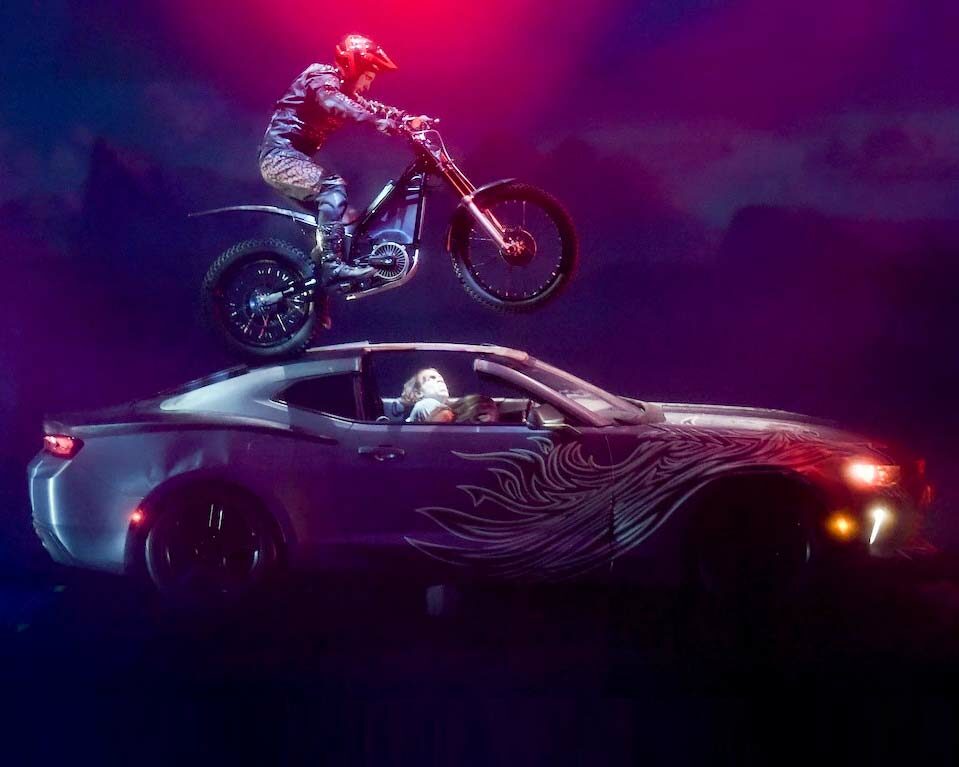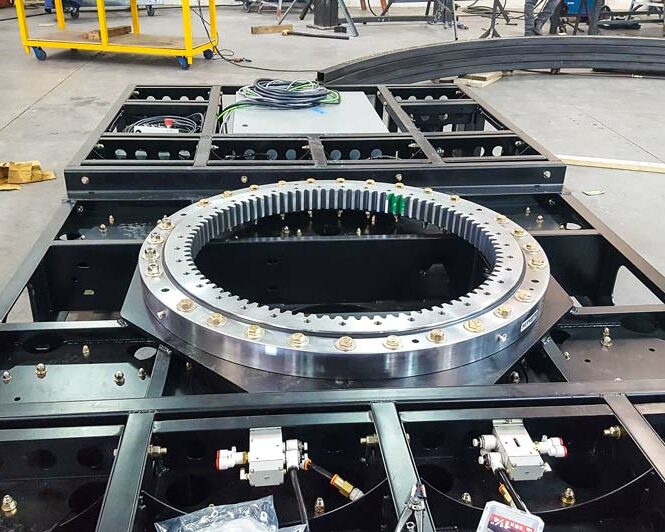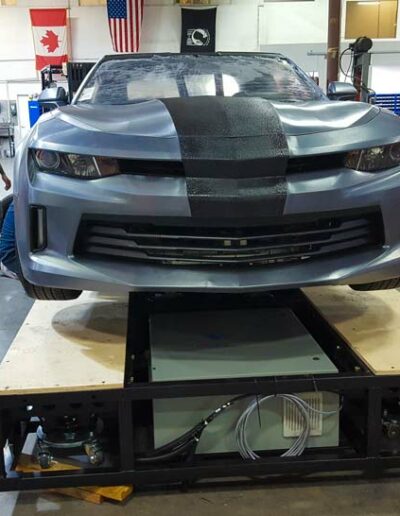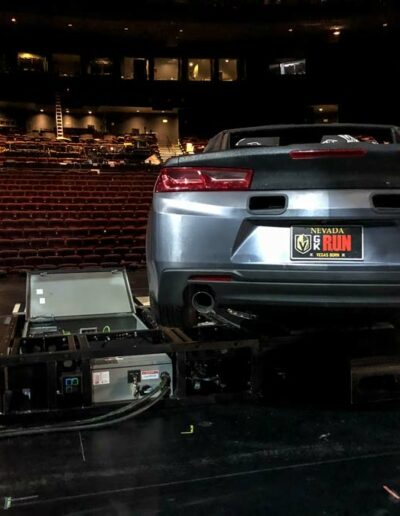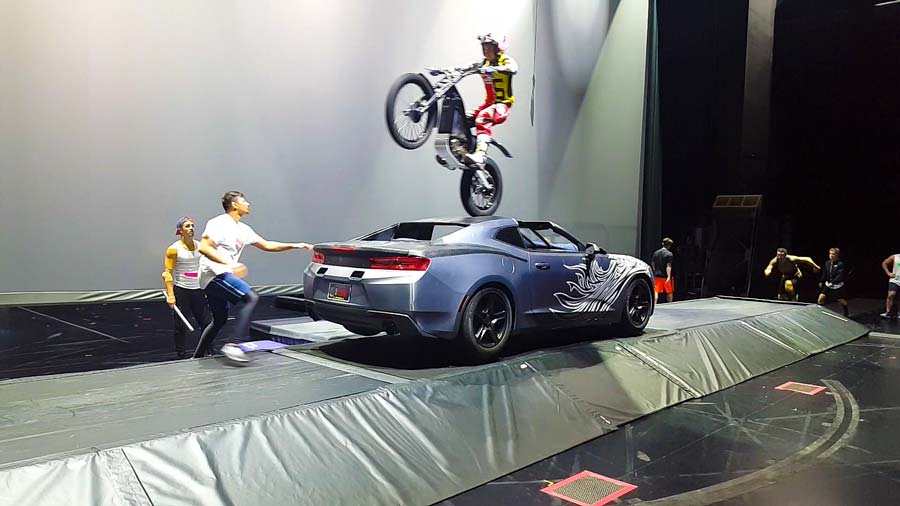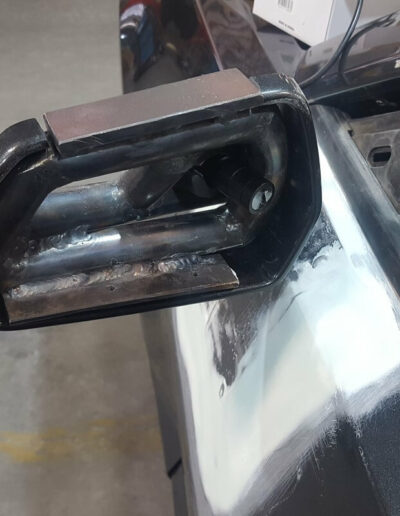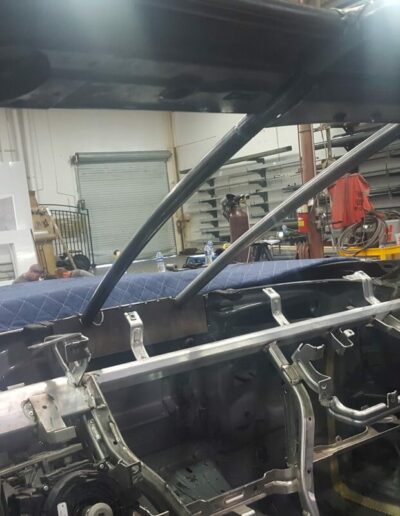R.U.N. made use of video screens to help create a dynamic background, bringing to the stage the look and feel of blockbuster action movies or comic-book graphic novels. In the scene with the car, the stage’s wide video screen shows the road rushing by, helping to simulate the car’s speed and its numerous choreographed turns. The screens allowed the audience to see the emotions of the actors in the car through a direct video feed from cameras mounted inside several locations in the car, including the sideview mirror.
EPS had designed a rolling unit capable of 1,080 degrees of rotation to spin the stunt car as the “driver” made fast turns throughout the getaway scene. The EPS onboard industrial controls, provided by AHI Automation, were designed to integrate seamlessly with the theater’s existing control system allowing the programmers to syncronize the movements of the car with those in the video. With controls for automation, lighting and video in both the rotating car and the base, EPS had a challenge with cable management. EPS needed to ensure that the live camera feed, which was sent over fiberoptic cable, would maintain its signal to the video screens from the base to the rotating car. The 7.5 RPM max speed of the car plus the limited space for a cable chain solution compounded the challenge.
Due to project timeline, finding a slip ring or slip rings that could manage high voltage motor power, fiberoptics and ethernet was not an option. The EPS team was able to integrate an innovative cable carrier solution from igus that allowed for even more than the 1,080 degrees of rotation desired. With this arrangement, they ensured that the video, power, and controls would remain connected without signal loss. All of the vehicle’s controls were fitted under the hollowed-out hood, running the flashing lights and spin of the tires in sync with the video screen and original composed music. The entire stunt car system was comprised of four different axes of motion: the two front tires that spun individually on two separate motors, the back tires that were controlled by another motor, and the rotation of the car on its base.
The production team for R.U.N. developed a unique stage system that would allow the performers to interact with and match the movement of the stunt car. On one side, a cushioned mat protected the performers who were pushed off of the car in the tense fight sequence. The other side of the stage featured a multi-speed treadmill that ran underfoot as actors jogged after the lead character making his getaway in the car. When motocross bikes joined the pursuit, the belt sped up to give the illusion of a high-speed chase.

